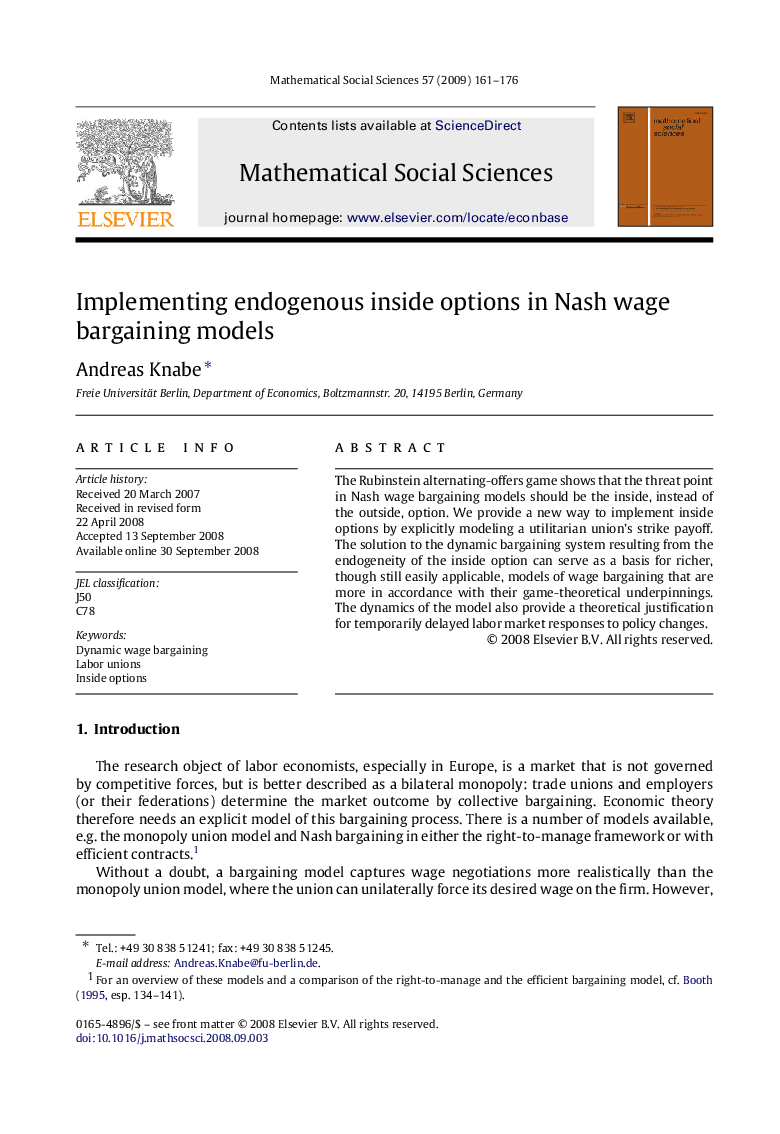| Article ID | Journal | Published Year | Pages | File Type |
|---|---|---|---|---|
| 972093 | Mathematical Social Sciences | 2009 | 16 Pages |
Abstract
The Rubinstein alternating-offers game shows that the threat point in Nash wage bargaining models should be the inside, instead of the outside, option. We provide a new way to implement inside options by explicitly modeling a utilitarian union’s strike payoff. The solution to the dynamic bargaining system resulting from the endogeneity of the inside option can serve as a basis for richer, though still easily applicable, models of wage bargaining that are more in accordance with their game-theoretical underpinnings. The dynamics of the model also provide a theoretical justification for temporarily delayed labor market responses to policy changes.
Keywords
Related Topics
Physical Sciences and Engineering
Mathematics
Applied Mathematics
Authors
Andreas Knabe,
